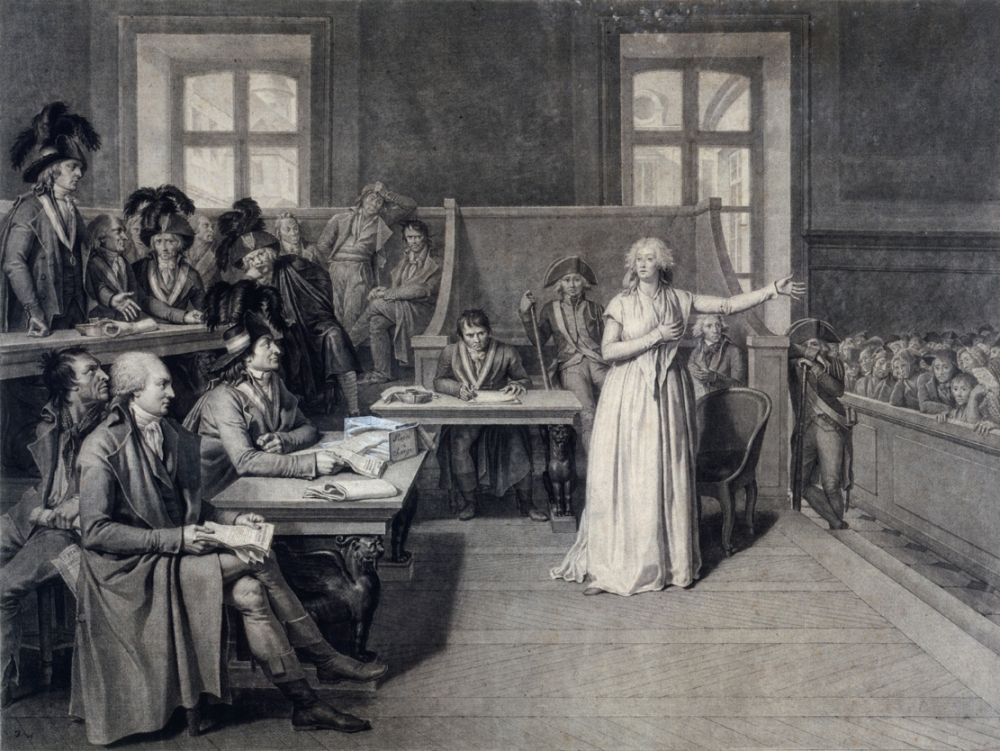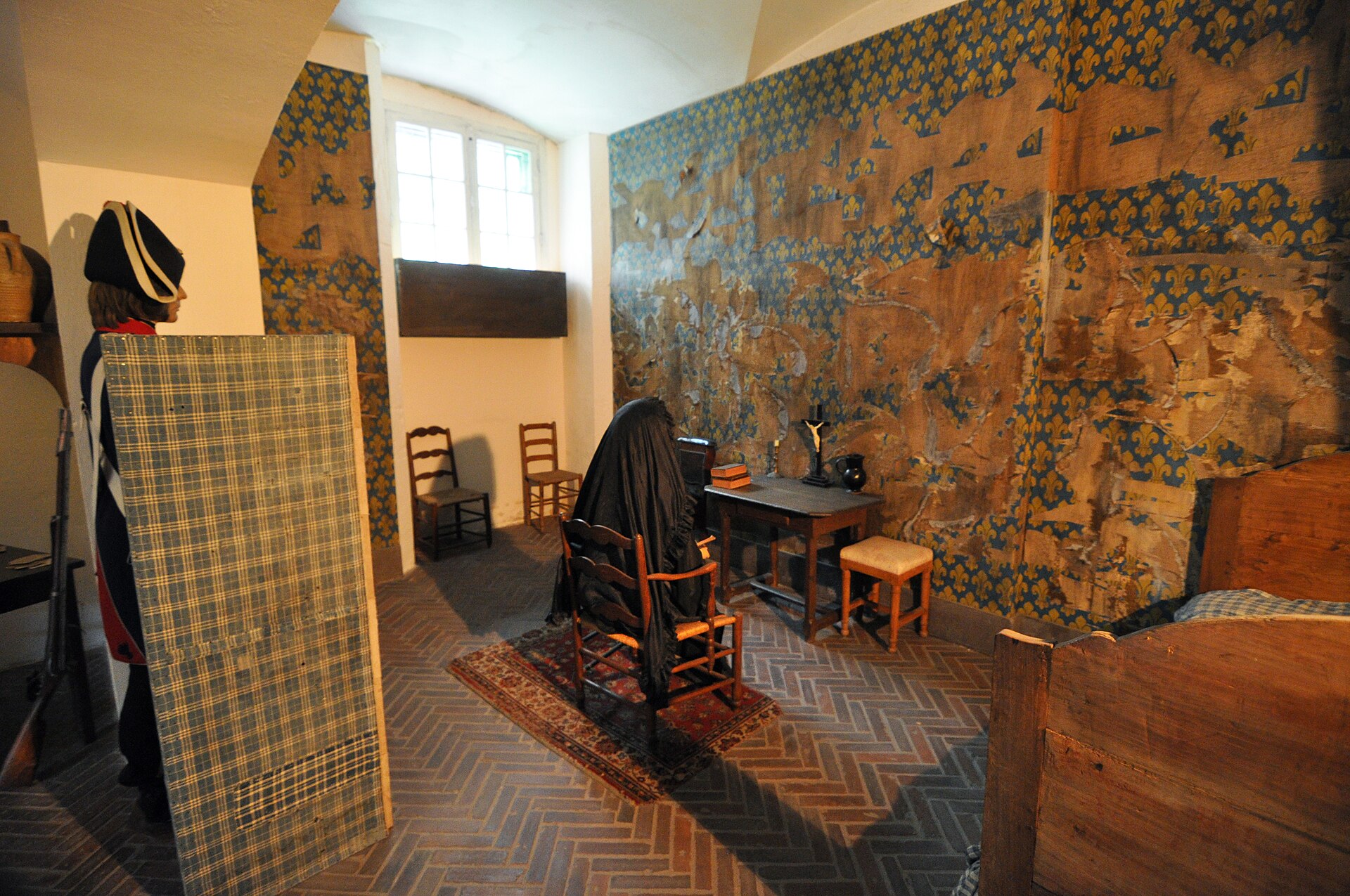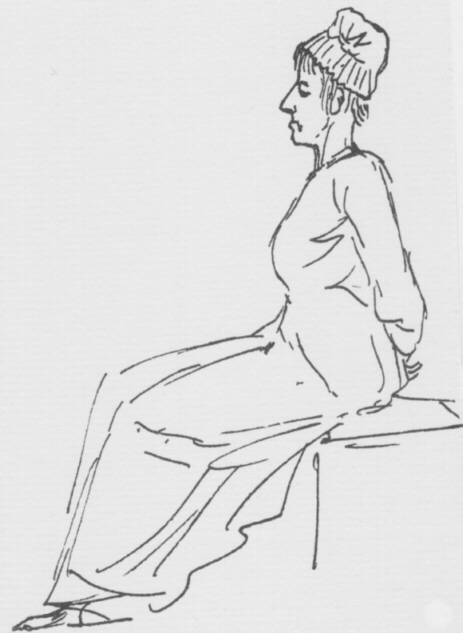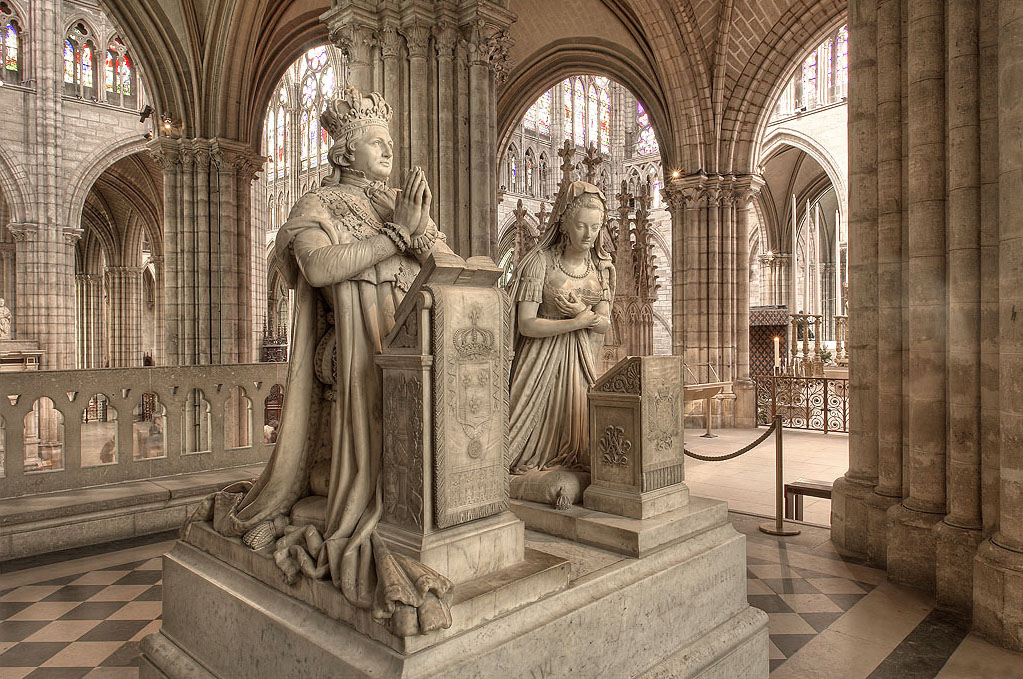compiled by Susan Flantzer
This does not purport to be a complete list. All images are from Wikipedia unless otherwise indicated.
Dafydd ap Gruffydd, Prince of Wales
- Born: July 11, 1238 in Gwynedd, Wales
- Parents: Gruffudd ap Llywelyn, son of Llywelyn the Great, and Senana ferch Caradog
- Married: Elizabeth Ferrers
- Died: 3 October 3, 1283, aged 45, in Shrewsbury, England
- Wikipedia: Dafydd ap Gruffydd, Prince of Wales
Dafydd ap Gruffydd was the last independent ruler of Wales. Between 1277 and 1283, King Edward I of England completed a conquest of Wales that resulted in his annexation of the Principality of Wales. Dafydd appears to have been betrayed by some of his own men, taken prisoner by the English and sentenced to death for treason. He was dragged through the streets of Shrewsbury attached to a horse’s tail then hanged alive, revived, then disemboweled and his entrails burned before him. Dafydd was then beheaded and his body was cut into four quarters. Dafydd ap Gruffydd was the first prominent person in recorded history to have been hanged, drawn and quartered. His head was placed on a pole in the Tower of London near the head of his brother Llywelyn. In 1282, Dafydd’s elder brother Llywelyn ap Gruffydd had been ambushed, horribly murdered and beheaded.
King Edward I wanted to make sure that there were no more claimants to the Welsh throne. Llywelyn ap Gruffydd’s daughter Gwenllian ferch Llywelyn and Dafydd ap Gruffydd’s daughter Gwladys ferch Dafydd were confined for life in remote convents in Lincolnshire and never allowed freedom. Dafydd ap Gruffydd’s two sons Llywelyn ap Dafydd and Owain ap Dafydd were imprisoned for the rest of their lives at Bristol Castle. Much of the time they were kept in cages.
********************
Thomas, 2nd Earl of Lancaster

The execution of Thomas, 2nd Earl of Lancaster
- Born: circa 1278
- Parents: Edmund Crouchback, 1st Earl of Lancaster, son of King Henry III of England, and Blanche of Artois
- Married: Alice de Lacy, 4th Countess of Lincoln in 1294, divorced circa 1318
- Died: March 22, 1322, aged circa 43-44 at Pontefract Castle in Yorkshire, England
- Buried: Pontefract Priory in Yorkshire, England
- Wikipedia: Thomas, 2nd Earl of Lancaster
Thomas was was the eldest son of Edmund Crouchback, 1st Earl of Lancaster who was the second eldest surviving son of King Henry III of England. He was an opposing power during the reign of his first cousin King Edward II. However, Thomas’ policies eventually failed and ended in an unsuccessful rebellion against the king. He was sentenced to death as a traitor to be hanged, drawn, and quartered. Because Thomas was his cousin, Edward II commuted his sentence to beheading. Dressed in a penitent robe, Thomas was led by an old mule to a hill in front of Pontefract Castle where a cheering crowd witnessed his beheading.
********************
Edmund of Woodstock, 1st Earl of Kent

- Born: August 5, 1301 at Woodstock Palace near Oxford, England
- Parents: King Edward I of England and his second wife Margaret of France, daughter of King Philippe III of France
- Married: Margaret Wake, 3rd Baroness Wake of Liddell in 1325
- Died: March 19, 1330, aged 28, at Winchester Castle in Winchester, England
- Buried: Initially buried at the Franciscan Friary in Winchester, England, in 1331 his remains were moved to Westminster Abbey in London, England
- Unofficial Royalty: Edmund of Woodstock, 1st Earl of Kent
In 1327, Edmund’s half-brother King Edward II of England had been forced to abdicate by his wife Isabella of France and her lover Roger Mortimer, 1st Earl of March in favor of his son 14-year-old son Edward III, with Isabella and Mortimer acting as regents. Edward II died in Berkeley Castle on September 21, 1327, probably murdered on the orders of Isabella and Mortimer.
In 1329, Edmund had been persuaded by an unknown friar that his half-brother Edward II was still alive and set about raising forces to free him and restore him to the throne. It later emerged that Roger Mortimer himself was responsible for leading Edmund to believe the former king was still alive, in a form of entrapment. Edmund was executed by beheading for high treason. Apparently, the execution had to be held up for a day because no one wanted to be responsible for a prince’s death. Eventually, a convicted murderer agreed to be the executioner in return for a pardon.
********************
Edward Plantagenet, 17th Earl of Warwick
- Born: February 25, 1475 at Warwick Castle in Warwick, England
- Parents: George Plantagenet, 1st Duke of Clarence and Lady Isabel Neville
- Died: November 28, 1499, aged 24, at the Tower of London in London, England
- Buried: Bisham Abbey in Bisham, Berkshire, England
- Wikipedia: Edward Plantagenet, 17th Earl of Warwick
Edward’s father was George Plantagenet, 1st Duke of Clarence, the son of Richard Plantagenet, 3rd Duke of York whose claim to the English throne led to the Wars of the Roses. George was the brother of King Edward IV and King Richard III from the House of York and was executed for treason against his brother Edward IV. Edward had one surviving sibling Margaret Pole, 8th Countess of Salisbury who was also beheaded, in 1541 (see below).
After the death of King Richard III at the Battle of Bosworth Field, when Henry Tudor became King of England as Henry VII from the new House of Tudor, ten-year-old Edward was imprisoned in the Tower of London because he was a Plantagenet claimant to the throne. In 1499, Edward became involved, willingly or unwillingly, in a plot to escape with Perkin Warbeck who claimed to be Richard, Duke of York, the second son of King Edward IV and one of the “Princes in the Tower.” Warbeck was hanged at Tyburn in London, a traditional place for executions. Edward was beheaded just outside the Tower of London at Tower Hill.
********************
Edmund de la Pole, 3rd Duke of Suffolk
- Born: circa 1471 in England
- Parents: John de la Pole, 2nd Duke of Suffolk and Elizabeth Plantagenet
- Married: Margaret Scrope in 1496
- Died: April 30, 1513, aged 41–42, on Tower Hill, outside of the Tower of London in London, England
- Buried: Minoresses Convent in Aldgate, London, England
- Wikipedia: Edmund de la Pole, 3rd Duke of Suffolk
Edmund’s mother was the daughter of Richard Plantagenet, 3rd Duke of York whose claim to the English throne led to the Wars of the Roses. She was the sister of King Edward IV and King Richard III from the House of York and so Edmund was another Yorkist claimant to the English throne. However, Edmund recognized Henry VII as King of England. After Henry VII executed Edward Plantagenet, 17th Earl of Warwick in 1499, Edmund became the Yorkist claimant to the English throne and supported Henry VII for a time.
In 1501, Edmund left England to seek foreign support for his claim to the throne. Holy Roman Emperor Maximilian I initially agreed to support Edmund but backed off due to financial issues. Edmund then threw his lots in with Philip of Burgundy, the son of Maximilian I, hoping he would eventually support Edmund. In 1506, Philip of Burgundy’s ship was caught in a storm and forced to land in England. Edmund was onboard the ship.
Henry VII would not let the ship leave England until Philip agreed to turn over Edmund. Philip agreed but with the condition that Edmund would not be harmed but merely imprisoned. Henry VII kept his word but supposedly instructed his son and heir, the future Henry VIII, to execute Edmund when he became king. Henry VII died in 1509 but Henry VIII was reluctant to execute Edmund, his first cousin once removed. In 1512, when Henry VIII went to war with King Louis XII of France, France officially recognized Edmund de la Pole as the rightful King of England. After being a prisoner in the Tower of London for seven years, Edmund was beheaded on Tower Hill, outside of the Tower of London in London, England.
********************
Anne Boleyn, Queen of England
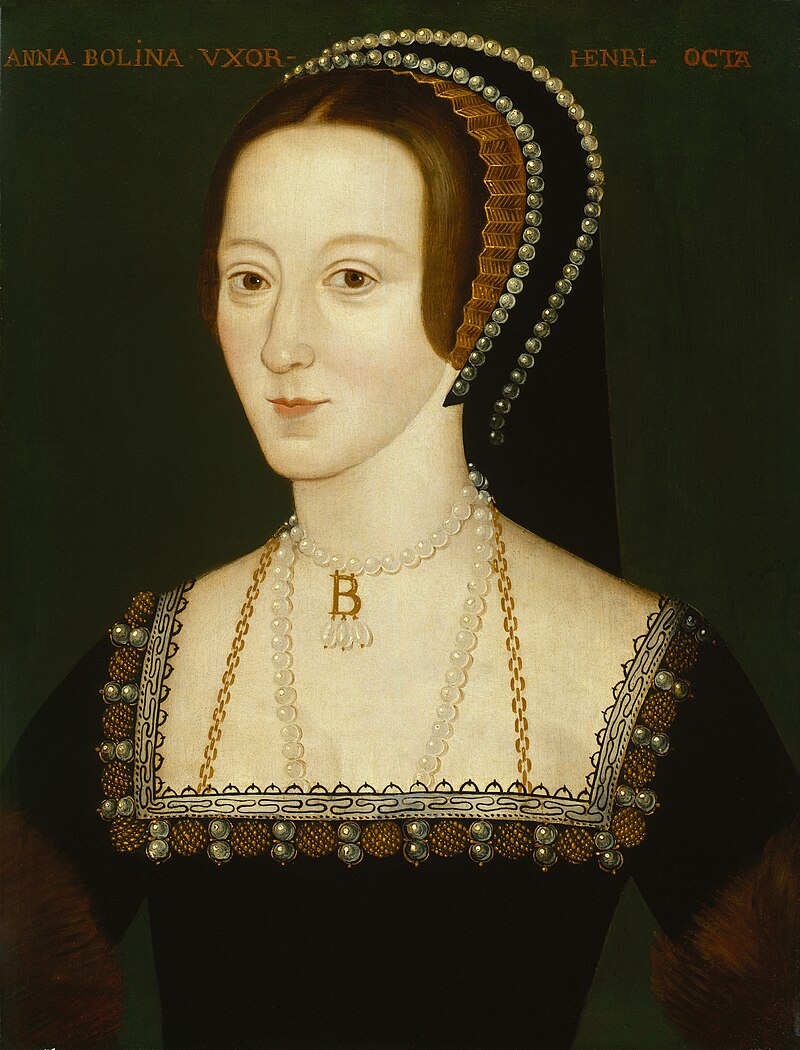
- Born: circa July 1501 – 1507 at Blickling Hall in Norfolk, England or Hever Castle in Kent, England
- Parents: Thomas Boleyn and Lady Elizabeth Howard
- Married: King Henry VIII of England in 1533, his second wife
- Died: May 19, 1536, aged 28–35, at the Tower of London in London, England
- Buried: Chapel of St Peter ad Vincula at the Tower of London in London, England
- Unofficial Royalty: Anne Boleyn, Queen of England
When Anne gave birth to her first child, a daughter Elizabeth, Henry was greatly disappointed and did not even attend Elizabeth’s christening. Anne soon found herself supplanted as she had done to Catherine of Aragon. Jane Seymour, one of her maids of honor, eventually Henry’s third wife, attracted Henry’s attention starting in 1534. By late 1535, Anne was pregnant again. However, during a tournament in January 1536, Henry fell from his horse and was unconscious for hours. The stress resulted in premature labor, and Anne miscarried a son.
The loss of this son sealed Anne’s fate. Henry was determined to be rid of her, and her fall and execution were engineered by Thomas Cromwell, Henry’s chief minister. Many historians believe that the case charging Anne with adultery with her brother George Boleyn and four other men (Francis Weston, Henry Norris, William Brereton, and Mark Smeaton) was completely fabricated. Anne was arrested on May 2, 1536, and taken to the Tower of London. On May 14, 1536, Thomas Cranmer, Archbishop of Canterbury declared her marriage to Henry was null and void. Her trial, presided over by her uncle Thomas Howard, 3rd Duke of Norfolk, occurred at the Tower on May 15, 1536, and she was found guilty of adultery, incest, and high treason. On May 18, 1536, Anne’s brother and the four other men were executed.
Anne’s execution was scheduled for May 19, 1536, on Tower Green within the Tower of London. Henry arranged for an expert swordsman from Calais, France who used a sword rather than an ax. After saying goodbye to her ladies, Anne knelt down and a blindfold was tied over her eyes. Anne remained in an upright kneeling position and kept repeating, “Jesu receive my soul; O Lord God have pity on my soul.” With one stroke of the executioner’s sword, Anne was dead.
********************
Margaret Pole, 8th Countess of Salisbury

- Born: August 14, 1473 at Farleigh Hungerford Castle in Somerset, England
- Parents: George Plantagenet, 1st Duke of Clarence and Lady Isabel Neville
- Married: Sir Richard Pole circa 1491
- Died: May 27, 1541, aged 67, at the Tower of London in London, England
- Buried: Chapel of St. Peter ad Vincula at the Tower of London in London, England
- Unofficial Royalty: Margaret Pole, 8th Countess of Salisbury
Margaret’s father was George Plantagenet, 1st Duke of Clarence, the son of Richard Plantagenet, 3rd Duke of York whose claim to the English throne led to the Wars of the Roses. George was the brother of King Edward IV and King Richard III from the House of York and was executed for treason against his brother Edward IV. Margaret had one surviving sibling Edward Plantagenet, 17th Earl of Warwick who was also beheaded, in 1499. (see above)
After the accession of King Henry VIII in 1509, Margaret was initially in favor at court. She was created Countess of Salisbury in her own right in 1513 and was godmother and later governess of Mary Tudor (later Queen Mary I), daughter of King Henry VIII and Catherine of Aragon.
Margaret had a strong and independent personality and eventually, she angered the king. In 1539, Margaret was accused of conducting treasonable correspondence with her son Cardinal Reginald Pole and was imprisoned in the Tower of London. An Act of Attainder was passed by Parliament and Margaret lost all her land and her title. It is suspected that the charges and the evidence were fabricated by Thomas Cromwell who himself fell out of favor and was executed in 1540.
On May 27, 1541, Margaret was told that she would be executed that day. She argued that there was no proof that she had committed a crime. The 67-year-old Margaret was dragged to the block at Tower Green within the Tower of London where she refused to place her head saying, “So should traitors do, and I am none.” The inexperienced executioner proceeded to “hack her head and shoulders to pieces” with ten blows of the ax. Pope Leo XIII beatified her as a martyr of the Roman Catholic Church on December 29, 1886, and she is known as Blessed Margaret Pole.
********************
Catherine Howard, Queen of England

- Born: circa 1523 in Lambeth, London, England
- Parents: Lord Edmund Howard and Joyce Culpeper
- Married: King Henry VIII of England, his fifth wife
- Died: February 13, 1542, aged about 18-19, at the Tower of London in London, England
- Buried: Chapel of St Peter ad Vincula at the Tower of London in London, England
- Unofficial Royalty: Catherine Howard, Queen of England
Henry VIII called his teenage bride his “rose without a thorn.” Catherine adopted the motto Non autre volonte que la sienne (No other will but his), which would soon prove quite ironic.
In 1540, Thomas Culpeper, a Gentleman to the King’s Privy Chamber, caught Catherine’s attention. By 1541, they were spending time together, often alone and late at night, aided and abetted by Catherine’s lady-in-waiting, Jane Boleyn, Viscountess Rochford, the widow of George Boleyn, who had been accused, convicted, and executed for adultery with his sister Anne Boleyn. The affair would cause the downfall of all involved.
Catherine also employed her previous lover Francis Dereham, first as her Private Secretary and then as a Gentleman Usher of the Queen’s Chamber. Dereham’s bragging about being Catherine’s former lover was brought to the attention of Thomas Cranmer, Archbishop of Canterbury, who brought evidence of Catherine’s previous affair with Dereham to the king’s attention. Dereham also exposed Catherine’s relationship with Thomas Culpeper.
On December 1, 1541, Francis Dereham and Thomas Culpeper were executed at Tyburn, the principal place of execution of London criminals and convicted traitors. Both men were to be hanged, drawn, and quartered. However, Henry VIII had mercy on his Gentleman to the King’s Privy Chamber and commuted Thomas Culpeper’s execution to a beheading. Francis Dereham was not as lucky and was hanged, drawn and quartered. Both their heads were placed on spikes on top of London Bridge.
Catherine was brought to the Tower of London on February 10, 1542, by barge, passing under London Bridge where Dereham and Culpepper’s heads were displayed and remained displayed until 1546. Her execution by beheading was to take place on February 13, 1542, at 7:00 AM. The night before her execution, Catherine is believed to have practiced how to lay her head upon the block, which had been brought to her at her request. Catherine was beheaded with one stroke on Tower Green within the Tower of London. Jane Boleyn, Viscountess Rochford, was executed immediately afterward.
********************
Lady Jane Grey, Queen of England

- Born: 1536 or 1537, possibly London, England or Bradgate Park, Leicestershire, England
- Parents: Henry Grey, 1st Duke of Suffolk and Lady Frances Brandon
- Married: Lord Guildford Dudley in 1553
- Died: February 12, 1554, aged 16-17 at the Tower of London in London, England
- Buried: Chapel of St Peter ad Vincula at the Tower of London in London, England
- Unofficial Royalty: Lady Jane Grey, Queen of England
Lady Jane Grey’s mother Lady Frances Brandon was the granddaughter of the first Tudor king, Henry VII, and the daughter of King Henry VIII’s younger sister Mary Tudor and Charles Brandon, Duke of Suffolk. According to the Third Succession Act, Lady Frances and Lady Jane were numbers three and four in the line of succession to the English throne, following King Henry VIII’s daughters Mary and Elizabeth.
As King Edward VI, Henry VIII’s only son lay dying in the early summer of 1553, John Dudley, 1st Duke of Northumberland, headed the Privy Council as Lord Protector, and also Jane’s father-in-law, hatched a plan for Jane to succeed Edward VI instead of the Roman Catholic Mary. Northumberland had Edward VI composed a document “My devise for the succession” in which he passed over his half-sisters and the Duchess of Suffolk (Frances Brandon). Edward meant for the throne to go to the Duchess’ daughters and their male heirs.
Upon Edward VI’s death, Jane became Queen of England but her reign lasted only nine days. The nobility was incensed with Northumberland and the people, for the most part, wanted Mary as their Queen, not Jane. In Northumberland’s absence, the Privy Council switched their allegiance from Jane to Mary and proclaimed her Queen on July 19, 1553.
Jane and her husband Lord Guildford Dudley were charged with high treason and condemned to death. Also condemned to death was Jane’s father Henry Grey, 1st Duke of Suffolk and Guildord’s father John Dudley, 1st Duke of Northumberland. The teenage couple was to be beheaded on February 12, 1534. About ten o’clock on the morning of February 12, 1534, Guildford was led to Tower Hill outside the Tower of London where he was to have a public execution. From the window of her room, Jane witnessed a horse and cart bringing Guildford’s body back to the Tower. Jane was then brought out to Tower Green inside the Tower of London where she was to have a private execution.
After giving a speech, Jane then recited a psalm and handed her gloves and handkerchief to her maid. The executioner asked for her forgiveness, which she granted him. Jane then blindfolded herself but she failed to find the block with her hands, and cried, “What shall I do? Where is it?” Probably Sir Thomas Brydges, the Deputy Lieutenant of the Tower, helped her find her way. With her head on the block, Jane spoke the last words of Jesus, “Lord, into thy hands I commend my spirit!”
********************
Mary, Queen of Scots

- Born: December 8, 1542 at Linlithgow Palace in Scotland
- Parents: James V, King of Scots and Mary of Guise
- Married: (1) François II, King of France in 1558 (2) Henry Stuart, Lord Darnley in 1565 (3) James Hepburn, 4th Earl of Bothwell in 1567
- Died: February 8, 1587, aged 44, at Fotheringhay Castle in Northamptonshire, England
- Buried: Initially at Peterborough Cathedral in Cambridgeshire, England, then moved by her son King James I of England/James VI, King of Scots in 1612 to Westminster Abbey in London, England
- Unofficial Royalty: Mary, Queen of Scots
On July 24, 1567, Mary was forced to abdicate in favor of her one-year-old son James. In 1568, Mary escaped from her imprisonment at Loch Leven Castle in Scotland. After being defeated at the Battle of Langside by the forces of her half-brother, the Earl of Moray, Mary was forced to flee to England, where she was subsequently imprisoned by Queen Elizabeth I of England. She was first taken to Carlisle Castle and then moved to Bolton Castle because it was further from the Scottish border. Mary was moved from castle to castle, all of which were in the interior of England and away from the sea for security reasons.
In August of 1586, Mary was implicated in the Babington Plot, a plot to assassinate Queen Elizabeth I. Shortly afterward, Mary was moved to her final place of imprisonment, Fotheringhay Castle in Northamptonshire where King Richard III of England had been born. In October of 1586, Mary was tried for treason. She protested that as a foreign anointed queen she had never been an English subject and therefore could not be convicted of treason. On October 25, 1586, Mary was convicted of treason and condemned to death.
Elizabeth I was reluctant to sign the death warrant of an anointed queen as she felt it would set a bad precedent and feared that Mary’s son James VI, King of Scots, now 20 years old, would form an alliance and invade England. However, on February 1, 1587, Elizabeth signed the death warrant. Having just found out she was to be executed the next day, Mary spent her final night praying in Fotheringhay Castle’s small chapel. She was beheaded on a scaffold in the Great Hall of Fotheringhay Castle on February 8, 1587. Mary was 44 years old and had spent the last nineteen years of her life imprisoned in English castles.
In 1603, as Queen Elizabeth I, the childless, last of the Tudors lay dying, she gave her assent that Mary, Queen of Scots’ son James VI, King of Scots, should succeed her. By primogeniture, James, who was descended from Margaret Tudor, the eldest daughter of King Henry VII of England, was the next in line to the English throne.
In 1612, the remains of Mary, Queen of Scots were exhumed upon the orders of her son and were reburied in a marble tomb with a beautiful effigy in Westminster Abbey in a chapel directly across the aisle from the chapel containing the tomb of Queen Elizabeth I. Mary, Queen of Scots is the ancestor of the current British royal family and many other European royal families.
********************
Charles I, King of England, King of Scots

- Born: November 19, 1600 at Dunfermline Palace in Dunfermline, Scotland
- Parents: James VI, King of Scots/James I, King of England and Anne of Denmark
- Married: Henrietta Maria of France in 1625
- Died: January 30, 1649, aged 48, at Whitehall in London, England
- Buried: St George’s Chapel, Windsor Castle in Windsor, England
- Unofficial Royalty: King Charles I of England
Charles had the same issues with Parliament as his father had, clashing with its members over financial, political, and religious issues. On January 4, 1642, a point of no return was reached. On that day, Charles committed the unprecedented act of entering the House of Commons with an armed guard and demanding the arrest of five Members of Parliament. There was a great public outcry, Charles fled London and Civil War appeared inevitable. Since that day no British monarch has entered the House of Commons when it is sitting.
On August 22, 1642, at Nottingham, Charles raised the Royal Standard and called for his loyal subjects to support him, and the Civil War between the Royalists or Cavaliers (Charles’ supporters) and the Roundheads (Parliament’s supporters) had begun. In 1646, after a series of battles that went badly for Charles, he surrendered to the Scottish Army expecting to be safe and well-treated. However, the Scots delivered Charles to Parliament in 1647. Except for one brief period in 1647, when he escaped, Charles was confined in several castles and great homes for the rest of his life. In January 1649, Charles was tried for treason against England for using his power to pursue his personal interest rather than the good of England. He was declared guilty and sentenced to death.
Charles awoke early on January 30, 1649, the day of his execution, and dressed all black and wore a blue sash. He requested one extra shirt from Thomas Herbert, his Gentleman of the Bedchamber so that the crowd gathered would not see him shiver from the cold and mistake it for fear. Charles walked the short distance from St. James’ Palace to the Palace of Whitehall where a scaffold had been built outside the Banqueting House. From the first floor of the Banqueting House, Charles stepped onto the scaffold from a window. Before his execution, Charles delivered a speech. Then, after a conversation with the executioner about what would happen, Charles stretched out his hands, and the executioner, with one blow, severed his head from his body. England was a republic (Commonwealth of England) for eleven years until the monarchy was restored and Charles I’s eldest son Charles II became king in 1660.
********************
James Scott, 1st Duke of Monmouth

- Born: April 9, 1649 in Rotterdam, Dutch Republic, now in the Netherlands
- Parents: King Charles II of England and his mistress Lucy Walter
- Married: Anne Scott, 1st Duchess of Buccleuch in 1663
- Died: July 15, 1685, aged 36, at Tower Hill, outside the Tower of London in London, England
- Buried: Chapel of St. Peter ad Vincula at the Tower of London in London, England
- Unofficial Royalty: James Scott, 1st Duke of Monmouth
James was the eldest illegitimate child of King Charles II of England. He was born before his father became king, while England was being ruled as a republic, and Charles was living in exile in the Dutch Republic. In 1660, the monarchy was restored in England and James’ father became king. James served in various military and government roles.
Because King Charles II had no legitimate children, his Catholic brother James, Duke of York was heir to the throne. In 1678, there was a popular outcry for a Protestant heir and James, Duke of Monmouth was touted as that heir. It was at this time that King Charles II issued a proclamation squelching the possibility that his son James was a legitimate heir. James was then sent out of England to Scotland to suppress an uprising. His success in Scotland only made James more popular and he was sent to the Netherlands into temporary exile. When James returned to England, his popularity had not decreased. King Charles II refused to see his son and deprived him of most of his positions. Over the next several years, there were several failed attempts of reconciliation between father and son.
In 1683, James was used as a tool in the unsuccessful Rye House Plot to assassinate King Charles II and James, Duke of York. James was obliged to go into exile in the Netherlands and he was there when his father, King Charles II, died on February 6, 1685, and his uncle became King James II.
Upon his father’s death, James, Duke of Monmouth asserted his claim to the throne and planned an invasion of England and Scotland. He landed at Lyme Regis, Dorset, England on June 11, 1685, and proclaimed himself king on June 20, 1685. On July 6, 1685, the armies of uncle and nephew met at the Battle of Sedgemoor where the army of James, Duke of Monmouth was defeated. James had left the battlefield disguised as a peasant and was discovered hiding in a ditch three days later.
James, Duke of Monmouth had previously been attainted of treason by Parliament on June 16, 1685, and was to “suffer Paines of Death and Incurr all Forfeitures as a Traitor Convicted and Attainted of High Treason.” Apparently, he groveled at the feet of his uncle King James II, begging for his life. James was sent to the Tower of London and beheaded on Tower Hill on July 15, 1685. It took several blows of the ax to behead him.
********************
Louis XVI, King of France

- Born: August 23, 1754 at the Palace of Versailles in Versailles, France
- Parents: Louis, Dauphin of France and Maria Josepha of Saxony
- Married: Archduchess Maria Antonia of Austria, known in France as Marie Antoinette, in 1770
- Died: January 21, 1793, aged 38 at the Place de la Révolution, now the Place de la Concorde, in Paris, France
- Buried: Initially at the Madeleine Cemetery in Paris, France, in 1815, his remains, along with those of his wife, were reinterred at the Basilica of Saint-Denis near Paris, the traditional burial site of the French royal family
- Unofficial Royalty: Louis XVI, King of France
Louis XVI’s attempts at financial reforms angered the French people and contributed to the fall of the monarchy. As he saw his power diminishing, he was forced to convoke the Estates-General, the legislative body, for the first time since 1614, to come up with solutions to the dire financial problems of the French government. Within months, King Louis XVI saw the majority of his power handed over to the elected representatives of the French people.
With the future of the monarchy looking very bleak, in 1791, Louis began to make plans to escape the city and take refuge along the northeastern border where he could be protected by Austria, his wife’s home country. The plan failed and in August 1791, Louis XVI was arrested and imprisoned. On September 21, the National Assembly declared a Republic, abolishing the monarchy, and stripping Louis and his family of all their titles and honors. The former King of France was now known as Citizen Louis Capet. Louis was brought to trial with 33 charges lodged against him. He was found guilty and sentenced to be executed.
On the morning of January 21, 1793, Louis made his final confession and attended Mass. He then traveled by carriage through the streets of Paris, to the Place de la Révolution (now the Place de la Concorde) where he was beheaded by guillotine.
********************
Marie Antoinette, Queen of France
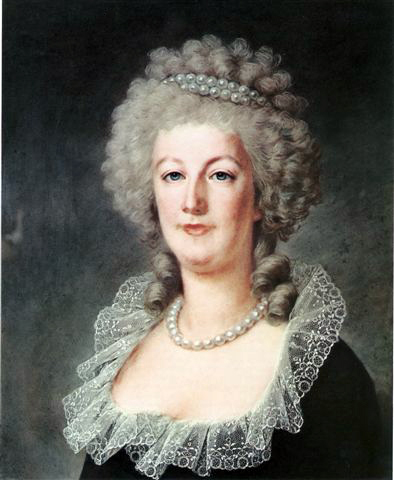
- Born: Archduchess Maria Antonia of Austria on November 2, 1755 at Hofburg Palace in Vienna, Austria
- Parents: Franz I, Holy Roman Emperor and Maria Theresa, Archduchess of Austria, and Queen of Hungary, Croatia, and Bohemia
- Married: King Louis XVI of France in 1770
- Died: October 16, 1793, aged 37, at the Place de la Révolution, now the Place de la Concorde, in Paris, France
- Buried: Iinitially at the Madeleine Cemetery in Paris, France, in 1815, her remains, along with those of her husband, were reinterred at the Basilica of Saint-Denis near Paris, the traditional burial site of the French royal family.
- Unofficial Royalty: Maria Antonia of Austria, Queen of France (Marie Antoinette)
By 1789, King Louis XVI had lost much of his absolute power to the National Assembly, and the majority of the French people saw no benefit of retaining the monarchy. After a failed attempt to escape Paris in 1791 ended what little support was left for the monarchy, the royal family was held under house arrest at the Tuileries Palace. On June 20, 1792, a mob broke into the Palace, threatening the Queen’s life. Spared this time, her luck would not be so good several months later when another mob stormed the palace on August 10, 1792. This time, the family sought refuge at the Legislative Assembly, but were arrested several days later, and imprisoned at the Temple.
On September 21, 1792, France officially abolished the monarchy and became a Republic. Marie Antoinette, her husband, and their family were stripped of their titles and honors, becoming known simply as Monsieur and Madame Capet. Louis XVI was soon separated from his family and charged with undermining the French Republic. He was tried, found guilty and sentenced to death. The former King Louis XVI was executed by guillotine on January 21, 1793. In July 1793, Marie Antoinette’s son was taken from her, with the intent of turning him against his mother. On August 1, 1793, the former queen was taken from the Temple and placed in a small cell in the Conciergerie. where she was known as Prisoner No. 280.
On October 14, 1793, Marie Antoinette was tried by the Revolutionary Tribunal. Among other things, she was charged with organizing orgies at Versailles, sending millions in French treasury money to Austria, and planning the massacre of the National Guards. Two days later, she was found guilty and sentenced to death. Just after noon on October 16, 1793, Marie Antoinette was executed by guillotine in the Place de la Révolution (now the Place de la Concorde).
********************
Madame Élisabeth, Princess of France

- Born: May 3, 1764 at the Palace of Versailles in Versailles, France
- Parents: Louis, Dauphin of France and Maria Josepha of Saxony
- Died: 10 May 10, 1794, aged 30, at the Place de la Révolution, now the Place de la Concorde, in Paris, France
- Buried: Initially buried in a common grave at the Errancis Cemetery in Paris, France, later Élisabeth’s remains, with that of other victims of the guillotine buried at the Errancis Cemetery, were placed in the Catacombs of Paris
- Unofficial Royalty: Madame Élisabeth of France
Élisabeth was devoted to her brother King Louis XVI and with his permission declined all marriage offers so that she could remain in France. Several times during the French Revolution, Élisabeth refused to leave France when she had the opportunity, choosing to remain with her brother and his family. She accompanied her brother and his family to imprisonment in the notorious Temple.
On May 9, 1794, Élisabeth was transferred to the Conciergerie where she was tried and condemned to be executed the next day. She was executed by the guillotine at the Place de la Révolution in Paris (now called Place de la Concorde) with 23 other people on May 10, 1794. A very religious person, Élisabeth comforted and prayed with several others awaiting execution.
The Roman Catholic Church views Élisabeth as a martyr and a Servant of God. The Cause of Beatification of Élisabeth was introduced in 1924 but has not yet been completed.
********************
Prince Faisal bin Musaid bin Abdulaziz Al Saud of Saudi Arabia

- Born: April 4, 1944, in Riyadh, Saudi Arabia
- Parents: Prince Musaid bin Abdulaziz Al Saud of Arabia and Watfa bint Muhammad bin Talal
- Died: June 18, 1975, aged 31, at Deera Square in Riyadh, Saudi Arabia
- Wikipedia: Faisal bin Musaid of Saudi Arabia
Prince Faisal’s father Prince Musaid was one of the forty-five sons (of whom 36 survived to adulthood) of Abdulaziz ibn Abdul Rahman Al Saud, also known as Ibn Saud, the founder and the first king of Saudi Arabia. Prince Musaid was the half-brother of King Faisal of Saudi Arabia and therefore, Prince Faisal was the king’s nephew.
On March 25, 1975, at the Royal Palace in Riyadh, Saudi Arabia, King Faisal was holding a reception. Prince Faisal bin Musaid bin Abdulaziz Al Saud joined the Kuwaiti delegation that had lined up to meet King Faisal. The king recognized his nephew Prince Faisal and bent his head forward so that his nephew could kiss the king’s head as a sign of respect. Prince Faisal took out a revolver from his robe and shot King Faisal twice in the head. The third shot missed and he threw the gun away. King Faisal fell to the floor. A bodyguard hit Prince Faisal with a sheathed sword but Saudi oil minister Ahmed Zaki Yamani yelled repeatedly not to kill the prince. Then bodyguards with swords and submachine guns subdued Prince Faisal and arrested him.
Prince Faisal was tried, convicted, and executed on June 18, 1975. The trial took place in a sharia court that met in a closed session. Within hours, the sharia court reached their verdict that Prince Faisal was guilty of having shot his uncle, King Faisal, to death. Public beheading is the traditional form of execution for a convicted murderer in Saudi Arabia and the sentence was carried out a few hours later.
Prince Faisal bin Musaid, wearing a white robe, was led by a soldier to the execution site and was reported to have walked unsteadily. Prince Faisal was then blindfolded and the large crowd watched silently until he was beheaded with one swing of a sword with a golden hilt. The crowd then broke into chants of “God is great!” and “Justice is done!”
********************








































